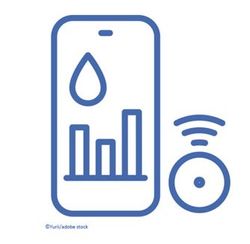© 2025 MJH Life Sciences™ , Patient Care Online – Primary Care News and Clinical Resources. All rights reserved.
ADA Updates Standards of Care, Adding Teplizumab for Delay of T1D, Emphasizing Hepatic Disease Management
The American Diabetes Association (ADA) updated its Standards of Care in Diabetes–2023, publishing new guidance around teplizumab to delay the onset of type 1 diabetes (T1D), and recommendations for the detection and management of nonalcoholic fatty liver disease (NAFLD) and nonalcoholic steatohepatitis (NASH) in individuals with diabetes.1
As noted by the ADA, the organization’s Professional Practice Committee reviews and updates the standards of care annually. These updates were announced at the 83rd Scientific Sessions in San Diego, California.
Updates on Teplizumab
Two revisions have been made to the Standards of Care in Diabetes–2023 regarding the use of teplizumab to delay T1D onset, according to an ADA press release.2
Teplizumab, a monoclonal antibody that targets the immune system, has demonstrated its ability to delay T1D onset among individuals considered high risk. The updated recommendations incorporate recent clinical trial findings and the drug’s FDA approval from November 2022.
"Type 1 diabetes is a devastating disease that affects millions of people worldwide, and there is a great need for effective treatments," said Nuha El Sayed, MD, MM Sc, chair of the Professional Practice Committee and overseer of the ADA's Standards of Care in Diabetes, in the ADA release.2
Refined diagnostic criteria for T1D
The revised section 2, titled "Classification and Diagnosis of Diabetes,” presents refined diagnostic criteria for T1D screening among individuals who are presymptomatic. Those who test positive for autoantibodies may now meet the criteria for intervention with teplizumab.
The updated recommendation 2.5 now reads, “Screening for presymptomatic type 1 diabetes may be done by detection of autoantibodies to insulin, glutamic acid decarboxylase (GAD), islet antigen 2, or zinc transporter 8.”
Additionally, recommendation 2.6 considers multiple confirmed islet autoantibodies to be a risk factor for clinical diabetes, adding that testing for dysglycemia may help to forecast near-term risk further. "When multiple islet autoantibodies are identified, referral to a specialized center for further evaluation and/or consideration of a clinical trial or approved therapy to potentially delay development of clinical diabetes should be considered,” the guideline says.
Both the updated recommendations 2.5 and 2.6 are considered grade B recommendations, meaning there is evidence from well-conducted cohort studies to support them.
Updates were also made at the end of section 2, with the final paragraph covering diabetes screening and noting there are several diabetes screening programs available in the US and Europe.
The paragraph also highlights how individuals with a family history of autoimmune diabetes and either personal or family history of allergic diseases or other autoimmune diseases are at a higher risk of developing autoimmune diabetes, compared with the general population.
The ADA also said individuals who receive a positive result for autoantibodies should be offered counseling regarding their risk of developing diabetes, symptoms associated with diabetes, methods to prevent diabetic ketoacidosis (DKA), and the possibility of further testing to determine if they meet the requirements for intervention aimed at delaying diabetes progression.
Section 3, originally "Prevention or Delay of Type 2 Diabetes and Associated Comorbidities," has dropped “Type 2” from the title, as new information regarding T1D has been added to the section.
The revised grade B recommendation 3.14 now reads, “Teplizumab-mzwv infusion to delay the onset of symptomatic type 1 diabetes should be considered in selected individuals aged ≥8 years with stage 2 type 1 diabetes. Management should be in a specialized setting with appropriately trained personnel.”
Updates on NAFLD, NASH
Updates were also made to section 4, “Comprehensive Medical Evaluation and Assessment of Comorbidities,” to reflect the most up-to-date clinical knowledge and evidence around NAFLD as related to diabetes.
Diabetes and liver disease are closely linked, and it is essential that health care professionals have the most current information to effectively detect and manage this disease,” said ElSayed in a separate ADA news release.3
Early detection is paramount
The updates to section 4 further stress the importance of early NAFLD detection in individuals with diabetes, along with the implementation of suitable management approaches. According to the ADA, detecting NAFLD early enables prompt treatment, thus lowering the risk of developing additional severe complications.
In this update, recommendation 4.10 has been replaced by 4 new grade B recommendations: 4.11a, 4.11b, 4.12, and 4.13.
Recommendation 4.11a advises that adults who have T2D or prediabetes should undergo screening or risk assessment for NAFLD with clinically significant fibrosis, especially if they have obesity, cardiometabolic risk factors, or established cardiovascular disease. This assessment should include a calculated fibrosis-4 index—which takes into account age, ALT, AST, and platelet levels—even if their liver enzymes are within the normal range.
Recommendation 4.11b states that adults with diabetes or prediabetes who have consistently high plasma aminotransferase levels for more than 6 months but a low fibrosis-4 index should be examined for other potential causes of liver disease.
Additionally, recommendation 4.12 reads, “Adults with type 2 diabetes or prediabetes with an indeterminate or high fibrosis-4 index should have additional risk stratification by liver stiffness measurement with transient elastography, or the blood biomarker enhanced liver fibrosis.”
Finally, recommendation 4.13 reads, “Adults with type 2 diabetes or prediabetes with indeterminate results or at high risk for significant liver fibrosis (i.e., by fibrosis-4 index, liver stiffness measurement, or enhanced liver fibrosis) should be referred to a gastroenterologist or hepatologist for further workup. Multidisciplinary care is recommended for long-term management.”
The Standards of Care also added 9 more recommendations, 4.14-4.19b, which focus on lifestyle, pharmaceutical, and surgical treatments for individuals with NAFLD or NASH.
References



